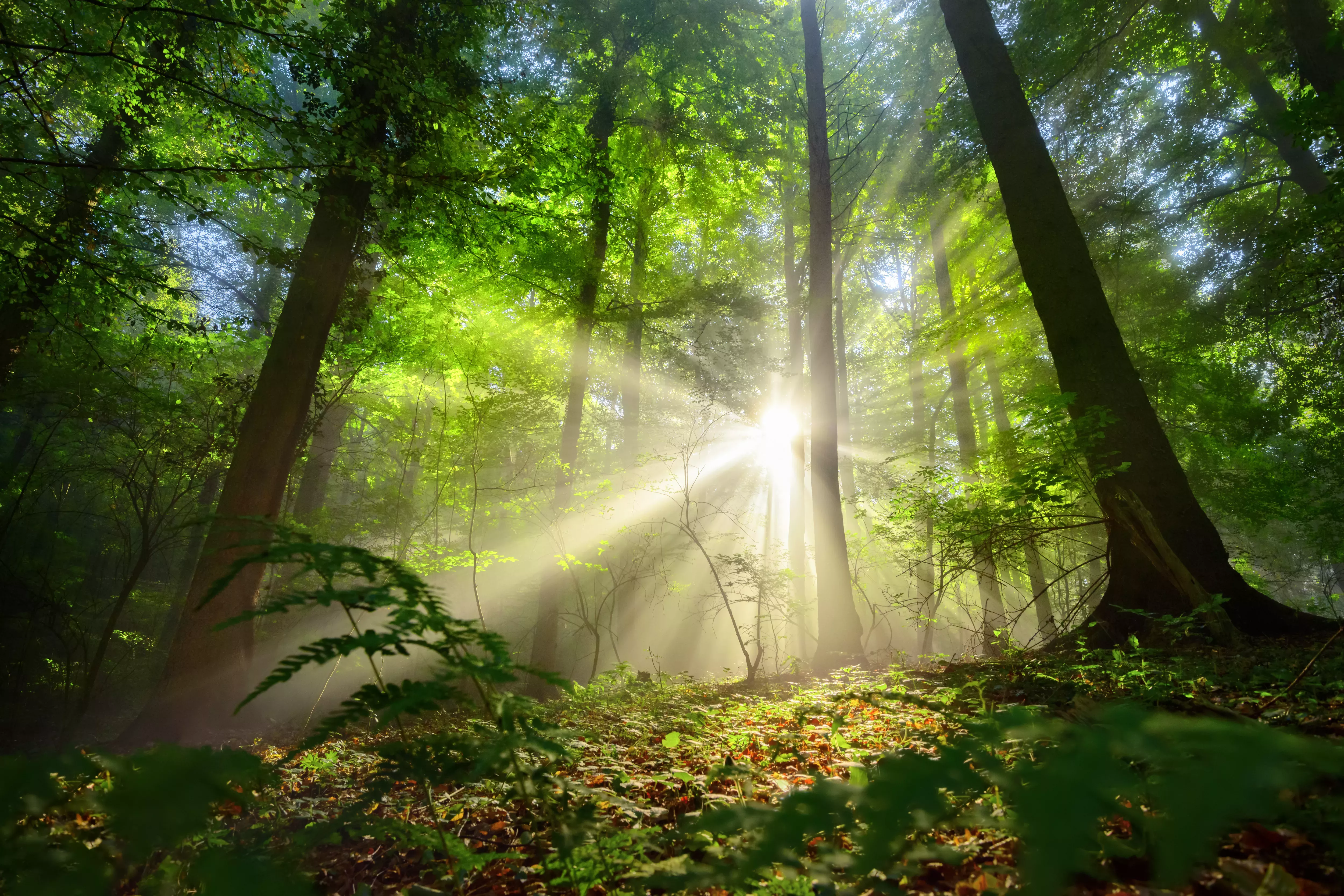State of the World's Plants and Fungi 2023 citations
Access the full list of citations for the report and associated peer-reviewed papers and preprints.

The State of the World's Plants and Fungi 2023 report draws on scientific papers from an open access special collection of the journals New Phytologist and Plants, People, Planet; a review of global fungal diversity in the Annual Review of Environment and Resources; and other associated preprints.
The full list of citations for the report and underlying peer-reviewed papers and preprints are available below, arranged by theme.
Download the State of the World's Plants and Fungi 2023 report (PDF)
Antonelli, A., et al. (2023). State of the World’s Plants and Fungi 2023. Royal Botanic Gardens, Kew. DOI: https://doi.org/10.34885/wnwn-6s63
Names, numbers and new species
Antonelli, A., et al. (2023). Why plant diversity and distribution matter. Editorial, ‘Global Plant Diversity and Distribution’. New Phytologist. DOI: https://doi.org/10.1111/nph.19282
Brown, M.J.M., et al. (2023). rWCVP: a companion R package for the World Checklist of Vascular Plants. New Phytologist. DOI: https://doi.org/10.1111/nph.18919
Govaerts, R., et al. (2021). The World Checklist of Vascular Plants, a continuously updated resource for exploring global plant diversity. Scientific Data 8: 215. DOI: https://doi.org/10.1038/s41597-021-00997-6
Kuhnhäuser, B.G., et al. (2023). RattanID – a molecular identification toolkit for rattan palms. Zenodo. DOI: https://doi.org/10.5281/zenodo.7895955
Lujan, M., et al. (2023). Trials and tribulations of Neotropical plant taxonomy: Pace of tree species description. bioRxiv. DOI: https://doi.org/10.1101/2023.09.05.556231
Niskanen, T., et al. (2023). Pushing the frontiers of biodiversity research: Unveiling the global
diversity, distribution and conservation of fungi. Annual Review of Environment and Resources. DOI: https://doi.org//10.1146/annurev-environ-112621-090937
Schellenberger Costa, D., et al. (2023). The big four of plant taxonomy – a comparison of global checklists of vascular plant names. New Phytologist. DOI: https://doi.org/10.1111/nph.18961
What grows where and why?
Boyko, J.D., et al. (2023). The evolutionary responses of life-history strategies to climatic variability in flowering plants. New Phytologist. DOI: https://doi.org/10.1111/nph.18971
Chang, Y., et al. (2023). Phytodiversity is associated with habitat heterogeneity from Eurasia to the Hengduan Mountains. New Phytologist. DOI: https://doi.org/10.1111/nph.19206
Coiro, M., et al. (2023). Reconciling fossils with phylogenies reveals the origin and macroevolutionary processes explaining the global cycad biodiversity. New Phytologist. DOI: https://doi.org/10.1111/nph.19010
Elliott, T.L. et al. (2023). Global analysis of Poales diversification – parallel evolution in space and time into open and closed habitats. bioRxiv. DOI: https://doi.org/10.1101/2023.09.14.557735
Niskanen, T. et al. (2023). Pushing the frontiers of biodiversity research: Unveiling the global diversity, distribution and conservation of fungi. Annual Review of Environment and Resources. DOI: https://doi.org//10.1146/annurev-environ-112621-090937
Pérez-Escobar, O., et al. (2023). The origin and speciation of orchids. bioRxiv. DOI: https://doi.org/10.1101/2023.09.10.556973
Sperotto, P., et al. (2023). Climbing mechanisms and the diversification of neotropical climbing plants across time and space. New Phytologist. DOI: https://doi.org/10.1111/nph.19093
Taylor, A., et al. (2023). The contribution of plant life and growth forms to global gradients of vascular plant diversity. New Phytologist. DOI: https://doi.org/10.1111/nph.19011
Villaverde, T., et al. (2023). Phylogenomics sheds new light on the drivers behind a long-lasting systematic riddle: the figwort family Scrophulariaceae. New Phytologist. DOI: https://doi.org/10.1111/nph.18845
Wölke, F.J.R., et al. (2023). Africa as an evolutionary arena for large fruits. New Phytologist. DOI: https://doi.org/10.1111/nph.19061
Hotspots and darkspots
Maitner, B., et al. (2023). A global assessment of the Raunkiæran shortfall in plants: geographic biases in our knowledge of plant traits. New Phytologist. DOI: https://doi.org/10.1111/nph.18999
Ondo, I., et al. (2023). Plant diversity darkspots for global collection priorities. bioRxiv. DOI: https://doi.org/10.1101/2023.09.12.557387
Ramírez-Barahona., et al. (2023). Assessing digital accessible botanical knowledge and priorities for exploration and discovery of plant diversity across Mesoamerica. New Phytologist. DOI: https://doi.org/10.1111/nph.19190
Tietje, M., et al. (2023). Global hotspots of plant phylogenetic diversity. New Phytologist. DOI: https://doi.org/10.1111/nph.19151
The outlook for biodiversity
Bachman, S., et al. (2023). Extinction risk predictions for the world’s flowering plants to support their conservation. bioRxiv. DOI: https://doi.org/10.1101/2023.08.29.555324
Brown, M.J.M., et al. (2023a). Three in four undescribed plant species are threatened with extinction. New Phytologist. DOI: https://doi.org/10.1111/nph.19214
Brown, M.J.M., et al. (2023b). Re-evaluating the importance of threatened species in maintaining global phytoregions. New Phytologist. DOI: https://doi.org/10.1111/nph.19295
Bureš, P., et al. (2023). The global distribution of angiosperm genome size is shaped by climate. bioRxiv. DOI: https://doi.org/10.1101/2022.12.05.519116
Gallagher, R.V., et al. (2023). Global shortfalls in threat assessments for endemic flora by country. Plants, People, Planet, 1–14. DOI: https://doi.org/10.1002/ppp3.10369
Niskanen, T., et al. (2023). Pushing the frontiers of biodiversity research: Unveiling the global
diversity, distribution and conservation of fungi. Annual Review of Environment and Resources. DOI: https://doi.org//10.1146/annurev-environ-112621-090937
Soto Gomez, M., et al. (2023). Genome size is positively correlated with extinction risk in herbaceous angiosperms. bioRxiv. DOI: https://doi.org/10.1101/2023.09.10.557053
Conclusion: Tackling the Nature Emergency in time
Nicolson, N., et al. (2023). Global access to nomenclatural botanical resources: Evaluating open access availability. Plants, People, Planet. DOI: https://doi.org/10.1002/ppp3.10438
